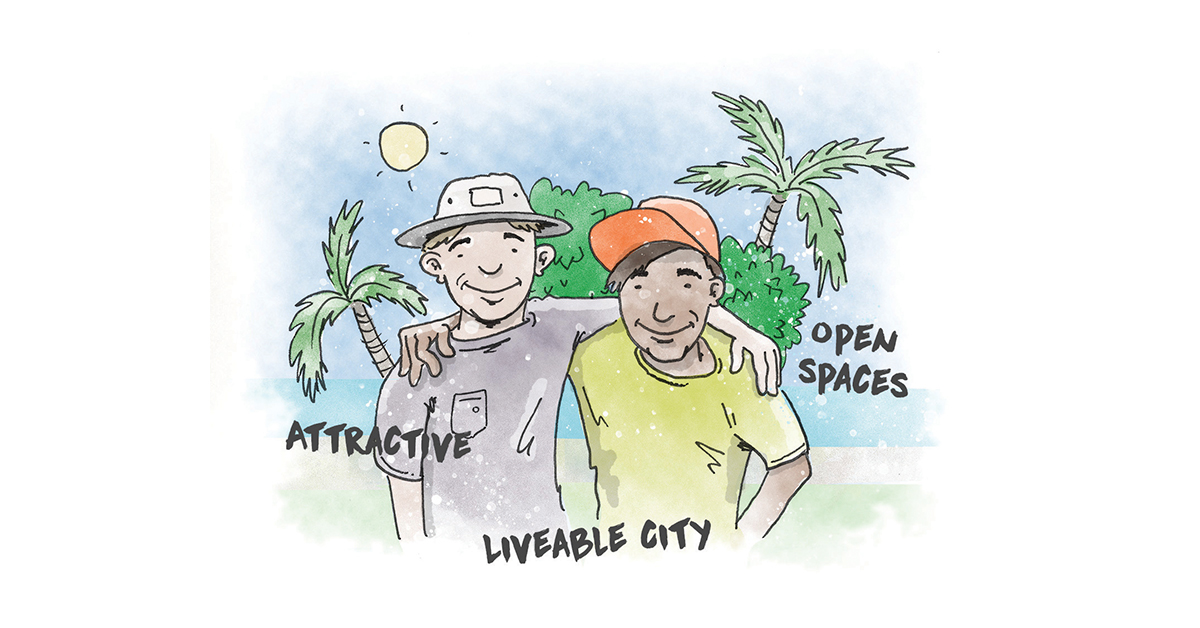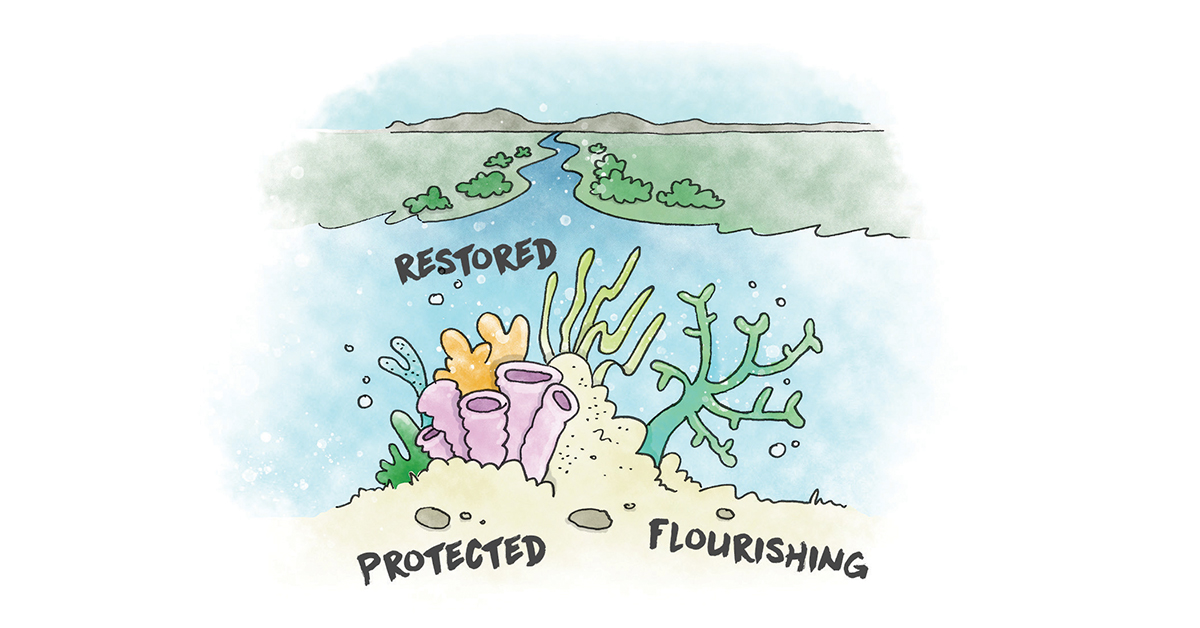Progressing Townsville’s water sensitive city vision
Regional cities like Townsville have much to benefit from adopting water sensitive practices that can enhance their attractiveness as a place to work and live.
Like many Australian regional cities, Townsville is managed by a single local government authority that also provides water system services. This approach provides Townsville City Council (TCC) with the opportunity to deliver an integrated, best value water servicing outcome that meets community needs. Unfortunately like many places across Australia, this opportunity is not fully realised, often leading to sub-optimal outcomes.
Towards the end of 2017, the CRCWSC worked with TCC to develop a Water Sensitive Vision and Transition Strategy for Townsville.
TCC recognised that to pursue this vision, further attention needed to be given to urban growth. Projections of an additional 68,000 people by 2036 will require the city’s water services to adapt to cater for this growth, and the city needs to grow in a way that protects the environment and keeps Townsville attractive and liveable.
Achieving these objectives presents an opportunity to better integrate water management with urban planning. Institutional arrangements can pose a barrier to innovative practices and alternative servicing approaches. Accordingly, the Townsville Action Learning Partnership was established in July 2019 between the CRCWSC and TCC to explore the institutional challenges limiting the achievement of integrated planning.

What is TCC doing?
Teams from across TCC worked with the CRCWSC to explore what a water sensitive regional city looks like while maintaining its distinctive dry topics identity.
The first question was: what on-ground outcomes will showcase Townsville’s water sensitive cities vision?
TCC faces several challenges when designing new suburbs:
- maintaining liveable open spaces while balancing water demands in Townsville’s long dry season
- reducing pollution loads to the Great Barrier Reef from both stormwater and wastewater discharges from new urban areas.
In responding to these challenges, stakeholders saw a role for TDesign in Townsville, based on the Queensland Government’s QDesign concept, a set of planning principles to achieve good design in urban development that reflects Queensland’s unique environment.

TDesign could be used to define what an urban forest looks like for the dry tropics and to deliver this through the City Plan. A research synthesis report Ideas for Townsville: Greening the public realm in a dry tropics city, explored this concept and proposed a series of water sensitive design elements for Townsville’s growth areas:
- Street tree clusters – e.g. use clusters of large and small trees along streets, as observed in the natural landscape
- Streets as green corridors – e.g. design wider streets that allow for green spaces, trees and services
- Space for tree canopy – e.g. allow for sufficient above and below ground space for trees to thrive
- Pair natural with irrigated open space – e.g. intentionally use natural areas that brown off in dry seasons alongside irrigated areas
- Blur the lines between public and private – e.g. have valued private open spaces at the front of lots that merge with the street to create a single experience
- Shade by design – e.g. build houses with verandahs and constructed window shading
- Spaces for infiltration – e.g. use affordable and practical strip driveways as a greening element
- Enable airflow – e.g. pursue house designs with garages and front yards that open as secondary living spaces for social interaction with the street
- Utilise available water in the urban landscape – e.g. harness roof runoff and air conditioner condensate and direct it to gardens
- Fit-for-purpose water sources – e.g. use recycled water used wherever possible.

The second question was: what kind of institutional arrangements do we need in place to deliver these outcomes?
The main report from the Townsville action learning partnership, Enabling water sensitive greenfield development in Townsville, identifies key barriers to water sensitive development and opportunities for creating a more enabling environment through changes to planning and governance systems.
It identifies 14 opportunities across three implementation pathways:
- Strategic leadership – Prioritising water through a water-centric city vision, clear directives and long-term policy priorities, and Council leadership in dry tropics water sensitive urban design.
- Planning – Streamlining decision making through the expansion of water provisions and prescriptive requirements, contextual design policy, water quality offsets schemes, and strategic greenfields planning at the corridor scale.
- Operations – Optimising functions through coordinated Council activity that bridges traditional silos and fosters cross-sector collaboration.

Next steps
TCC has established a cross-council Water Sensitive Townsville working group to provide a platform for exploring and advancing the opportunities identified through the Townsville Action Learning Partnership. This working group connects individuals across organisational silos and equips them with the skills and tools to put water sensitive principles into effect.
According to Chris Chesterfield (CRCWSC IRP3 Project leader), Townsville could become a model for dry tropics cities around the world. He said the challenges observed in Townsville, such as governance, policy and cross-sector collaboration, are common across many cities seeking to achieve their visions for greater ‘water sensitivity’. Townsville’s experience can help cities to see these challenges as part of a continuum of change and to understand the drivers involved and the responses required.
Chris said: ‘Townsville’s experience shows how the CRCWSC’s action research partnerships help cities understand their current context, learn from other cities in similar situations, and develop a transition agenda to achieve WSC outcomes.
If you have questions, please contact Sylvia Tawfik at sylvia.tawfik@monash.edu.